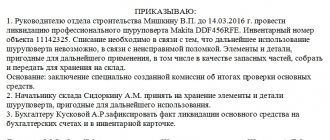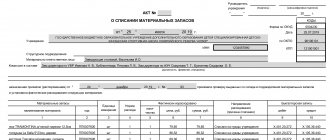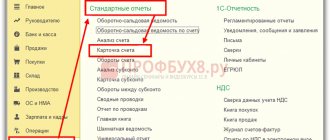Rules for accounting for fuels and lubricants have been updated
By order of the Ministry of Transport dated 04/06/2021 No. NA-51-r, methodological recommendations on fuel and lubricant consumption standards for certain brands of cars produced in 2008 and later were updated. It is recommended to use consumption standards not only when making calculations, but also when writing off the costs of fuels and lubricants (but this is a right, not an obligation of enterprises).
The updates affected the following sections:
- “Domestic and CIS vans manufactured since 2008”;
- “Domestic and CIS passenger cars produced since 2008” (for Lada Granta, Lada Priora, Lada Kalina, Lada Vesta, etc.);
- “Domestic and CIS flatbed trucks produced since 2008”;
- “Domestic and CIS buses since 2008.”
The maximum values of winter surcharges to fuel consumption standards in Sevastopol and Crimea were also approved. These indicators are necessary for calculating the cost of transportation and other types of transport work, making payments to vehicle drivers and users, and planning the needs of companies for the provision of fuel and lubricants.
Fuel consumption accounting: rationing and write-off of vehicles
Since gasoline is mainly used by enterprises to operate vehicles, it is written off according to the data on waybills issued for each vehicle unit.
They write it off in accordance with the developed standards. Automotive companies calculate the optimal fuel consumption per 100 km of travel for each vehicle unit, relying on the guiding documents of the Ministry of Transport, which are periodically updated, for example, Order of the Ministry of Transport of the Russian Federation dated March 14, 2008 No. AM-23-r (as amended on September 20, 2018) on recommended consumption rates fuels and lubricants, taking into account increasing factors used under various (non-standard) operating conditions of vehicles.
For example, in winter, basic standards increase by 10-20% depending on the region where the company is located; they affect the standard and the population in the area where the company operates, the age of the car and the degree of “mountainousness” of the area. If the legislative document does not contain the brand of the car used in the company, then the fuel consumption rates for it are calculated on the basis of technical documentation and the vehicle passport.
Depending on the taxation regime, enterprises differ in the procedure for writing off fuel and lubricants. Thus, an OSNO company writes off fuel and lubricants for the month on the last day of the month, and a simplified entrepreneur writes off gasoline as an expense on the day of its purchase.
Rules for accounting for fuels and lubricants - standards
Companies have the right to approve their own fuel consumption limit:
- borrow information about the consumption of fuel and lubricants from the technical documentation for the machine;
- They collect a commission and take measurements.
Gasoline consumption is measured according to the following scheme (separately for an empty and loaded vehicle, for summer and winter trips, for idle time with the engine running, etc.):
- Gasoline is poured into an empty tank and its volume is recorded.
- The car drives until the gas tank is completely empty.
- The speedometer determines how many kilometers the car has traveled before the tank is empty.
- It is determined how much fuel is required to travel 1 kilometer (the number of liters divided by the number of kilometers).
- An act of the commission is drawn up with the signatures of all its members.
Important!
Periodically, it is necessary to reconcile the data reflected in the accounting records with the actual balances. As for determining the standard for gasoline consumption, it is allowed to set a basic standard and increasing coefficients for trips on congested highways, for trips in winter, etc.
Rules for accounting for fuels and lubricants: postings
Accounting for purchased fuels and lubricants will depend on how they were purchased:
| Operation | DEBIT | CREDIT |
| Purchase of fuel and lubricants using fuel cards and coupons | ||
| Reflection of funds transferred for cards/coupons as an advance issued | 60, subaccount “advances issued” | 51 |
| Acceptance for deduction of VAT on advance payments issued | 68, subaccount “VAT calculations” | 76 |
| Acceptance for accounting of fuels and lubricants issued using coupons or cards (based on a report from the company issuing coupons or cards, or coupon stubs from drivers). | 10 | 60 |
| Reflection of VAT on fuel and lubricants | 19 | 60 |
| Acceptance for deduction of VAT on fuel and lubricants | 68, subaccount “VAT calculations” | 19 |
| Restoration of VAT accepted for deduction from the transferred advance payment | 76 | 68, subaccount “VAT calculations” |
| Purchase of fuel and lubricants for cash | ||
| Issuance of money against a report for the purchase of fuels and lubricants | 71 | 50 |
| Capitalization of fuel and lubricants based on an advance report from the driver | 10 | 71 |
| Reflection of VAT on purchased fuels and lubricants | 19 | 71 |
| Acceptance for deduction of “input” VAT on fuel and lubricants | 68, subaccount “VAT calculations” | 19 |
The cost of fuel and lubricants consumed per month is calculated using waybills or reports from mileage and fuel consumption monitoring systems. Write-offs are made to expenses on the last day of the month:
| Operation | DEBIT | CREDIT |
| Including the cost of fuel and lubricants in costs (only if there is a seller’s invoice) | 20 (26, 44) | 10 |
The concept of fuels and lubricants
Let's start by looking at the very concept of “fuel and lubricants”, what it includes.
Explanation of fuels and lubricants - “fuels and lubricants”. From the name it is clear that this includes not only fuel, but also related materials necessary for the normal functioning of the vehicle.
Fuel and lubricants include:
- All types of fuel (gas, diesel, gasoline);
- Lubricants (oils, lubricants used in the process of repair, maintenance and operation of vehicles);
- Brake and coolant fluids.
The procedure for writing off fuels and lubricants
Fuels and lubricants are written off as expenses based on so-called standards. What are these standards and where do you get them?
First of all, it should be noted that there are standards for the write-off of fuel and lubricants established by the Russian Ministry of Transport. But the use of these standards is not necessary; the Tax Code of the Russian Federation allows you to develop your own standards for the consumption of fuel and lubricants and use them for write-off.
Everything is clear with the standards approved by the Ministry of Transport; take the established standard for writing off fuel and other related materials for your type of transport and write it off.
If you want to develop your own standards, then read below.
★ Best-selling book “Accounting from scratch” for dummies (understand how to do accounting in 72 hours) > 8,000 books purchased
If you have not found the answer to your question, then you can get an answer to your question by calling the numbers ⇓ Free legal advice Moscow, Moscow region call
One-click call
St. Petersburg, Leningrad region call: +7 (812) 317-60-16
One-click call
From other regions of the Russian Federation call
One-click call
Calculation of fuel consumption rates
Calculation of the write-off rate for fuel and lubricants can be done in two ways:
- Use the technical documentation available for the vehicle, on the basis of which to develop standards for the use of fuel and lubricants depending on seasonality, time of year (winter fuel consumption is significantly higher than summer), it is also important to take into account road congestion.
- Establish standards based on an analysis of the actual use of transport and measurements. This method is used much more often than the first, so we will analyze it in more detail.
How to correctly measure fuel consumption?
The first step will be to create a commission to monitor correct measurements.
Measurements of fuel use are carried out as follows: the empty tank of the vehicle is filled to the maximum with fuel, the amount of fuel filled is noted, and the speedometer data is recorded. After this, the vehicle is used in normal mode until the fuel tank is empty, after which the speedometer data is again recorded. By subtracting the initial speedometer reading from the last one, the car's mileage is obtained - the number of kilometers that the vehicle managed to travel on a full tank of fuel. Now the fuel consumption per 1 km is calculated, for which the volume of fuel poured is divided by the distance traveled by the car using this fuel. This will be the norm for fuel consumption.
Since the conditions under which a vehicle is used can vary significantly, it is necessary to take measurements in different conditions. When measuring fuel consumption, you need to take into account:
- time of year (take measurements in the cold and warm seasons);
- traffic congestion;
- How difficult is the traffic on the roads (presence of traffic jams);
- idle vehicle with the engine running.
Having carried out measurements under various conditions, several standards are obtained that should be followed in the process of writing off fuel as expenses.
In addition, the enterprise can take a slightly different route: take measurements for a standard situation, and develop correction factors for various deviations of operating conditions from the norm.
The results obtained must be approved by an act signed by the members of the previously created commission.
When determining and setting for yourself standards and limits for the use of fuel and lubricants, you need to remember that the obtained values must be economically justified and not overestimated. You should not artificially increase consumption standards, because the Tax Inspectorate may have questions that are not very pleasant for you.
We have sorted out the calculation of fuel consumption rates, now let’s look at how accounting for fuels and lubricants occurs at an enterprise, what transactions need to be made during operation.
Accounting for fuel and lubricants and wiring
In accounting, fuels and lubricants are written off either as sales expenses (for trade organizations) or as production costs (for manufacturing organizations).
Thus, the accounting account to which the costs of fuel and lubricants should be attributed is 44 or 20 (23, 26). The debit of these accounts corresponds with the credit of the materials accounting account (account 10), on which a separate sub-account is opened for accounting for fuel and lubricants.
Posting for write-off of fuels and lubricants:
D20, 23, 26 (44) K10.3 – the cost of used fuels and lubricants is written off as enterprise expenses.
The 20th account is used if the transport is used for work needs, for example, delivering goods to customers.
The 23rd account is usually used by large enterprises with a larger number of vehicles.
Fuel and lubricants for vehicles used for business purposes are written off to the 26th account.
It would be logical to make an entry for writing off fuel and lubricants for the amount of fuel actually consumed, but, as a rule, it is very difficult to determine the exact amount of fuel used, which is why fuels and lubricants are written off according to established standards.
Fuel and lubricants are accepted for accounting in accounting on the 10th account.
Materials are purchased, as a rule, in cash or by bank transfer. In the first case, cash is given to the driver for reporting; after purchasing the necessary fuel and lubricants, the driver reports on the amount spent using an advance report. The driver's remaining money is handed over to the company's cash desk. When purchasing materials by bank transfer, non-cash funds are debited from the company's current account.
The wiring looks like this:
- D71 K50 – cash issued on account.
- D10.3 K71 - materials purchased for cash are accepted for accounting.
- D60 K51 – payment is transferred to the supplier.
- D10.3 K60 – materials purchased by bank transfer are accepted for accounting.
- D19 K60 – VAT on purchased materials is allocated (if allocated).
Any posting is carried out only on the basis of a supporting document.
Posting for the write-off of fuel and lubricants is carried out on the basis of a waybill and a certificate for the write-off of fuel and lubricants. The waybill can be used to write off fuel as an expense, and the act can be used to write off other lubricants.
Waybill samples:
- passenger car;
- truck.
The posting of acceptance of fuel and lubricants for accounting is carried out on the basis of an advance report and a document confirming the fact of payment, for example, a check (for cash payments) or a delivery note, an invoice and documents confirming payment (for non-cash payments).
In addition to the above, accounting for fuels and lubricants at an enterprise also includes conducting periodic inventories (daily, weekly, monthly - at the discretion of the organization itself).
In order to check the remaining fuel with the accounting data, you can go in two ways.
Add gasoline or other used fuel into the car tank until the tank is full, then subtract the added volume from the volume of the full tank, then check the resulting value with the data in account 10.3.
Drain the remaining fuel from the tank, measure its quantity and compare it with the accounting data on the 10th account.
Rate the quality of the article. We want to be better for you:
If the enterprise is not a motor transport enterprise, then it is not required to draw up a daily waybill. Each enterprise has the right to set the frequency of filling it out, based on its production activities - daily, every ten days or monthly.
The only condition is the correct justification for the consumption of fuel and lubricants, the possibility of determining it in order to write it off on the basis of the waybill.
Rules for accounting for fuel and lubricants received when purchasing a car
When you buy a car, there is usually a certain amount of gasoline left in the tank. If the volume of gasoline is specified in the purchase and sale agreement, fuel and lubricants can be capitalized; if not, there are options:
- when there is very little gasoline in the tank, it is not taken into account, and the accountant notes the receipt and write-off of gasoline from the moment of the first refueling;
- if the tank is almost completely full, you need to find out the volume of fuel and arrange a free receipt (this will be taxable income, the cost of fuel and lubricants is posted to DEBIT 10 CREDIT 98, when writing off, entries are made to DEBIT account 20 (26, 44) and CREDIT 10, as well as DEBIT 98 CREDIT 91) or identify surpluses (they are included in income and posted to DEBIT 10 CREDIT 91, income is generated in tax accounting).
Rules for accounting for fuel and lubricants - accounting for compensation
If personal cars of employees are used in the production process (with the consent and knowledge of the employer), they may be paid monetary compensation without restrictions. According to Article 188 of the Labor Code of the Russian Federation, the employer is obliged to pay such compensation, and their amount must be stipulated in the employment contract or in an additional agreement. The amount of compensation is not limited, but must be justified. Funds are paid at the end of the calendar month.
It is recommended to draw up an additional agreement to the employment contract (with a vehicle registration certificate and a copy of the operating manual attached), which would provide for the following points:
- the employee must keep records of business trips in travel vouchers;
- waybills and documents evidencing travel expenses incurred are submitted to the accounting department on the last working day of the month;
- the employer undertakes to pay compensation for the use of an employee’s car;
- an employee from ... (date) in the performance of work duties uses a car belonging to him for business purposes (information about the car);
- compensation is calculated according to the fuel consumption standard specified in the vehicle’s operating manual and mileage.
Compensation is calculated in proportion to the number of days worked by the employee, during vacation, business trip, etc. no payment is made.
For tax purposes, compensation for the use of an employee’s personal car is rationed:
- reimbursement of the cost of fuel, separate from the payment of compensation, is an excess payment that cannot be taken into account when calculating the tax base for income tax (Letter of the Ministry of Finance of the Russian Federation dated August 23, 2013 No. 03-03-06/1/39239);
- expenses for payment of compensation are taken into account in expenses (as of the date of actual payment to the employee) within the limits approved by Decree of the Government of the Russian Federation dated 02/08/2002 No. 92.
An example of accounting for compensation for the use of a personal car
The employer paid the employee 5,500 rubles for the use of an employee’s passenger car with an engine capacity of less than 2 thousand cubic meters for production purposes. see. It will be possible to reduce the tax base for income tax only by 1,200 rubles according to the norm. Postings on the date of payment of compensation:
| Operation | DEBIT | CREDIT | Amount (rub.) |
| Reflection of the amount of compensation in expenses (with the attachment of a certificate calculating the amount for the month of using the car) | 20 | 73 | 3000 |
| Transfer of compensation amount to an employee | 73 | 51 | 3000 |
| Reflection of permanent tax liability | 99 | 68 | 360 (RUR 3,000 – RUR 1,200) x 20% |
Rules for accounting for fuel and lubricants - confirmation of fuel costs
Waybill forms are required for use only by professional carriers. Non-core companies have the right to develop their own forms and reflect them as an appendix with a sample in their accounting policies. You should remember these points:
- a separate waybill must be issued for each vehicle;
- The maximum validity period of the sheet is 1 month;
- The waybill reflects the exact route of the trip and fuel consumption.
If the company has more than two vehicles, it will be easier to account for fuel costs if you maintain internal reporting.
Reporting forms, deadlines for preparation, list of responsible persons - everything is approved by management in the order. Useful reporting forms include:
- A report on the movement of fuels and lubricants, drawn up by the employee financially responsible for the issuance of fuels and lubricants on the basis of acts, requirements, invoices, cards for recording fuel consumption, and a sheet for recording the return of coupons. The document contains information about the employee who received the fuel, types of fuel and lubricants, units of measurement, purpose of issue, balance at the beginning/end of the reporting period, receipt, disposal.
- Record sheet for the issuance of fuels and lubricants. The document indicates the fuel issued to all employees. Drivers present a waybill or other document, the total amount of fuel and lubricants is summarized at the end of the statement, along with the name and brand of fuel and lubricants, information about the car (registration number, model, make), information about the driver (full name, day of fuel issue, personnel number), information about fuels and lubricants required during the period of vehicle maintenance and repair (based on invoices and limit cards).
Using waybills
In the forms of sheets that are approved by the 78th Resolution, there are columns intended for entering information about how much fuel the driver actually used during the trip: the balance before its start, consumption when completing the travel task indicated in the document, the balance upon the return of the vehicle to garage.
Those who use vouchers based on Order No. 152 are not required to include data on the movement of fuel and lubricants. The actual amount of fuel consumed is the difference between the speedometer readings at the time of departure and return, that is, based on the mileage.
If the PL form is developed at the enterprise, the standard volume of materials consumed is also calculated using the methodology established by the Ministry of Transport at the disposal of AM-23-r. They set standards for fuel consumption by vehicles of various brands and models.
That is, for write-offs for inclusion in primary accounting as expenses of the period for which the report is compiled, two methods are used to calculate the amount of fuel used:
- actual;
- normative.
The exception is the use of specialized equipment (chainsaws, walk-behind tractors, etc.) for refueling. In this case, instead of a waybill, a write-off act is drawn up.
Answers to common questions about fuel and lubricants accounting rules
Question #1:
How to write off gasoline based on its consumption if it is impossible to understand how much fuel is left in the tank of a filled car?
Answer:
As a rule, for these purposes, actual fuel consumption is determined as the number of kilometers on the speedometer multiplied by the standard adopted by the company.
Question #2:
The company applies fuel consumption standards established by the Ministry of Transport for tax accounting purposes. Is it possible to apply similar standards in accounting?
Answer:
Yes. The same limit value (according to the standards of the Ministry of Transport or independently developed standards) can be used when calculating the gasoline consumed and when reducing the tax base.
Calculation example
Let us use a conditional example to explain the procedure for writing off fuel according to waybills. Almaz LLC has a certain brand of gasoline in stock, 70 liters, at a price of 42 rubles. This month, 100 liters of fuel of the same brand were purchased at a price of 40 rubles, and 40 liters were dispensed. Fuel and lubricants are written off at average cost.
The average write-off value will be:
- 70 * 42 = 2940 rubles;
- 100 * 40 = 4000 rub.;
- 2940 + 4000 = 6940 rubles;
- 70 + 100 = 170 l;
- 6940 / 170 = 40.82 rubles.
Based on actual fuel consumption, costs are calculated as follows:
- The waybill shows the remaining fuel in the tank is 5 liters, 40 liters were filled, the remainder after the flight is 10 liters.
- Actual consumption: 5 + 40 – 10 = 35 l.
- Having assessed this expense according to the calculated cost, we obtain the cost of fuel and lubricants: 35 * 40.82 = 1428.70 rubles.
- Let the car be used for official purposes by the deputy director, then the costs will be written off Dt 26 Kt 10/3 for maintenance.
When calculating according to standards, the calculation formula is taken from document AM-23-R. The car, the waybills of which we took for the calculation, is a passenger car, the formula (p. 2, p. 7) will be as follows: Qн = 0.01 * Hs * S * (1 + 0.01 x D), where:
- D – correction factor in percentage established in the organization;
- S—mileage;
- Hs – consumption rate per 100 km.
Seasonal coefficient D (winter, increasing, reflecting increased gasoline consumption) is not applied. The consumption rate for this model is 8.8 l. The recorded speedometer readings when leaving were 2510, when returning - 2565.
Calculation:
- Mileage: 2565 - 2510 = 55 km.
- Flow: Qn = 0.01 * 8.8 * 55 * (1 + 0.01) = 0.01 * 8.8 * 55 * 1.01 = 0.01 * 484 * 1.01 = 4.84 * 1.01 = 4.89 l.
- 4.89 * 40.82 = 199.61 rub.
- Wiring: Dt 26 Kt 10/3 199.61 rub.







